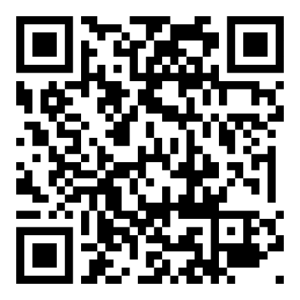You’ve participated in some protests and have a cause which you feel is under-represented and needs support in your community. It might be time to organize your own protest.
Organizing protests is a lot of work: They require forethought, planning, and preparation. But you can do it!
As we’ve discussed in this series, sociologists have proven that the most effective protests build public support through non-violence and peaceful disruption. The peaceful disruption creates a sense of pressure to do something, while embracing the tenets of non-violence communicates that the protest has constructive intentions.
Let’s take a brief look at organizing a convincing, persuasive protest that has a greater chance of being successful.
Create a Team of Organizers for the Protest
Begin by reaching out to like-minded community members, asking if they want to help organize a protest, intentionally building relationships with those who are interested. Actively listen and consider their experience and guidance.
Then seek out local, regional, and national organizations that support your cause and invite them to collaborate with you. Contact them well in advance (weeks, months) to help set the date of the protest event and get their “buy-in” to endorse (and attend) the demonstration. They may have resources (to avoid duplication of efforts), information, and networks you can tap into.
After you meet with these other like-minded organizations, make a detailed plan for the division of labor before and during the event. This is critical for a successful outcome. For example, will you have a first aid crew? Will you have lanyards, badges, T-shirts or hats so participants can easily identify key contacts during the protest?
Meanwhile, start building the event itself. The time, place, and program should be geared to the desired audience, which leads us to the bigger questions.
Define the Strategy
Protest leaders and participants must collectively be able to answer these questions during planning:
-
- What exact goals do you want to achieve in this demonstration?
- Are you advocating for, supporting, or protesting a specific issue/cause?
- Set the tone of the demonstration. What you want to accomplish depends on how your cause is viewed by the public and media (optics). If your demonstration is too festive it may not seem serious to the public.
- What type of protest will best achieve your goal? The most common modes of protest are marches and rallies, sit-ins, walk-outs, vigils, and more complex efforts like encampments and choreographed or theatrical expressions.
Practical Planning for the Event
-
- When and where should you organize this action to make the most effective impact?
- Do you need a town/city/local/state permit for this event? (Hint: the answer is probably “yes.” Plan ahead so you have enough time to get this in place.)
- Contact the local and/or national media with information and an invitation to cover the event.
- Ask: Who has the power to help make your plan happen? This includes donations and funding to pay for signs, travel, accommodations for disabled participants and shirts, hats, lanyards, and other identifying items for participants and organizers.
- Seriously consider the location, route and timing of the demonstration: Will a certain holiday or day of the week have the most impact? For example, many groups have “Moral Mondays” or popular “Souls to the Polls” on Sundays during elections. Consider what day and time is best for your cause. Morning? All day? An evening candle vigil?
- Do you aim to build a larger coalition to continue working on your issue after this event? Make sure your communication channels are clearly established.
- Are you trying to be seen and heard by an elected official or influential figure? If you plan ahead, you can invite interested celebrities, government figures, and other well-known activists to your event. That means having a staging area at the appointed meeting place and time, with microphones, speakers, and lectern.
- Educate protest participants in their civil rights: Have you made clear to participants their local, state and federal rights, such as the First Amendment and local/state rules for having a march or protest?
- Provide your participants with solid information about legal limitations that exist in the protest area such as digital safety and the right to film in case authorities confiscate your phone.
Define Clear Goals for the Event
Setting your goal clearly is tantamount to success, because it’s the prime determinant of the form and function it will take for optimal outcomes. Common goals for demonstrations include:
-
- Advocacy: To urge legislators or the public to look favorably on a bill, adopt a particular idea or policy or service, or pay attention to the needs of a particular group of people.
- Support: To express agreement or solidarity with a person or group, with an idea or policy, or with a particular issue.
- Counter-demonstration: To respond to a demonstration or other public event already scheduled by another public figure or organization.
- Public Relations: To advertise or put in a good light an event, issue, organization, segment of the population, etc.
- Action: To achieve a specific substantive purpose, effect the prevention of, or change, a particular public project, entity, or policy. An event, for example, could include meeting with city, state and federal elected representatives.
What Extra Training Do You Need?
For example, many organizers take classes in de-escalation, which can help during tense or mob situations.
It All Starts With You
Stay cool, calm, and protest peacefully during the summer, and throughout the year.
And we want to hear from you. What questions do you have about protesting? What advice would you share? Send your comments, suggestions, questions, or even brief essays to [email protected].
Sources and Resources for this Article
Summer of Change: New Books to Inspire Environmental Action
The Activist Handbook and other sources below provide practical guides and resources so you can plan your demonstration successfully.
Indivisible and No Kings offer training and education on protesting safely and effectively, as well as new and upcoming protest events.
The Human Rights Campaign: Tips for Preparedness, Peaceful Protesting, and Safety
ACLU Guide: How to Protest Safely and Responsibly
Amnesty International Protest Guide
Wired: How to Protest Safely: What to Bring, What to Do, and What to Avoid
“The New Science of Social Change: A Modern Handbook for Activists” by Lisa Mueller
“Agenda Seeding: How 1960s Black Protests Moved Elites, Public Opinion and Voting” by Omar Wasow
“Non-Violent Resistance (Satyagraha)” by M. K. Gandhi



